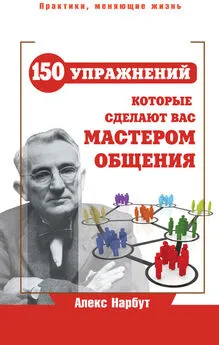Жан-мари Буасвер - Я всегда знаю, что сказать! Как развить уверенность в себе и стать мастером общения
- Название:Я всегда знаю, что сказать! Как развить уверенность в себе и стать мастером общения
- Автор:
- Жанр:
- Издательство:Эксмо
- Год:2015
- Город:Москва
- ISBN:978-5-699-77052-6
- Рейтинг:
- Избранное:Добавить в избранное
-
Отзывы:
-
Ваша оценка:
Жан-мари Буасвер - Я всегда знаю, что сказать! Как развить уверенность в себе и стать мастером общения краткое содержание
Хотите, чтобы в жизни все всегда складывалось, как вам хочется? Для этого необходимо обнаружить и использовать свои лучшие качества. Эта книга поможет вам разобраться в себе и преодолеть все преграды на пути к успеху.
В первой части вы найдете ответы на многие вопросы, которые давно себе задаете. Узнаете, как избавиться от излишней тревожности и неуверенности, преодолеете зависимость от окружающих и повысите свою самооценку.
Вторая часть книги откроет все секреты общения. Вы научитесь правильно вести разговор с любым собеседником, умело обосновывать просьбы или отказы, отвечать на критику, разрешать конфликты, ориентироваться в мире языка жестов. Результаты исследований, мудрые советы и эффективные практические упражнения сделают вас уверенным в себе человеком и настоящим мастером общения.
Я всегда знаю, что сказать! Как развить уверенность в себе и стать мастером общения - читать онлайн бесплатно ознакомительный отрывок
Интервал:
Закладка:
CIMINERO, A. R., STEINGARTEN, K. A. (1978). The effects of performance standards on self-evaluation and self-reinforcement in depressed and nondepressed individuals. Cognitive therapy and research, 2, 179–182.
D’ZURILLA, T. J. (1969). Graduated prolonged exposure. Document inédit, State University of New York at Stony Brook.
D’ZURILLA, T. J., WILSON, G. T., NELSON, R. (1973). A preliminary study of the effectiveness of graduated prolonged exposure in the treatment of irrational fear. Behavior therapy, 4, 672–685.
EISLER, R. M., FREDERIKSEN, L. W., PETERSON, G. L. (1978). The relationship of cognitive variables to the expression of assertiveness. Behavior therapy, 9, 419–427.
ELLIS, A. (1963). Reason and emotion in psychotherapy. New York: Lyle-Stuart.
ELLIS, A., GRIEGER, R. (Eds.) (1977). Handbook of rational emotive therapy. New York: Springer.
ELLIS, A., HARPER, R. A. (1961). A guide to rational living. North Hollywood: Wilshire Book.
GLASS, C., GOTTMAN, J., SHMURAK, S. (1976). Response acquisition and cognitive self-statement modifi cation approaches to dating skills training. Journal of counseling psychology, 23, 520–526.
GOLFRIED, M. R., GOLFRIED, A. P. (1975). Cognitive change methods. In F. H. Kanfer et A. P. Goldstein (Eds.): Helping people change. New York: Pergamon.
JACOBSON, E. (1934). You must relax. New York: McGraw Hill.
JACOBSON, E. (1938). Progressive relaxation. Chicago: University of Chicago Press.
KARST, T. O., TREXLER, L. D. (1970). Initial study using fi xed-role and rational-emotive therapy in treating public speaking phobia. Journal of consulting and clinical psychology, 34, 360–366.
MARSTON, A. R. (1964). Personality variables related to self-reinforcement. Journal of psychology, 58, 169–175.
MEICHENBAUM, D. (1975). Self-instructional methods. In F. H. Kanfer et A. P. Goldstein (Eds.): Helping people change. New York: Pergamon. S’affirmer et communiquer 304
MEICHENBAUM, D., CAMERON, R. (1973). Stress inoculation: A skills training approach to anxiety management. Document inédit, Université de Waterloo, Ontario.
MEICHENBAUM. D., CAMERON, R. (1974). The clinical potential of modifying what clients say to themselves. Psychotherapy: Theory, research and practice, 11, 103–117.
MEICHENBAUM, D., TURK, D. (1976). The cognitive-behavioral management of anxiety, anger, and pain. In P. O. Davidson (Ed.): The behavioral management of anxiety, depression and pain. New York: Brunner/Mazel.
OLLENDICK, T. H., MURPHY, M. J. (1977). Differential effectiveness of muscular and cognitive relaxation as a function of locus of control. Journal of behavior therapy and experimental psychiatry, 8, 223–228.
RIMM, D. C., DEGROOT, J. C., BOORD, P., HERMAN, J., DILLOW, P. V. (1971). Systematic desensitization of an anger response. Behaviour research and therapy, 9, 273–280.
SEE, L. P., CERCELL, P. T., BERWICK, K., BEIGAL, A. (1974). The effects of assertion training on self concept and anxiety. Archives of general psychiatry, 31, 502–504.
SHERMAN, A. R., PLUMMER, I. L. (1973). Training in relaxation as a behavioral selfmanagement skill: An exploratory investigation. Behavior therapy, 4, 543–550.
VALENTINE, J., ARKOWITZ, H. (1975). Social anxiety and the self-evaluation of interpersonal performance. Psychological reports, 36, 211–221.
WENRICH, W. W., DAWLEY, H. H., GENERAL, D. A. (1976). Self-directed systematic desensitization. Kalamazoo, Michigan: Behaviordelia.
WOLPE, J. (1958). Psychotherapy by reciprocal inhibition. Stanford, Calif.: Stanford University Press.
7. Разрешение конфликтов
Метод решения проблем все больше и больше используется, чтобы помочь людям в разрешении их межличностных конфликтов, и оказывается очень эффективным. Вот несколько ссылок.
BRISCOE, R. V., HOFFMAN, D. B., BAILEY, J. S. (1975). Behavioral community psychology: Training a community board to problem solve. Journal of applied behavior analysis, 8, 157–168.
DERISI, W. J., BUTZ, G. (1975). Writing behavioral contracts. Champaign, Illinois: Research Press.
D’ZURILLA, T. J., GOLFRIED, M. R. (1971). Problem solving and behavior modifi cation. Journal of abnormal psychology, 78, 107–126.
EWART, C. K. (1978). Behavior contracts in couple therapy: An experimental evaluation of quid pro quo and good faith models. Document présenté au Congrès de l’American Psychological Association, Toronto.
JAYARATNE, S. (1978). Behavioral intervention and family decision-making. Social work. Janvier, 20–25.
KIFER, R. E., LEWIS, M. A., GREEN, D. R, PHILLIPS, E. L. (1974). Training predelinquent youths and their parents to negociate confl ict situations. Journal of applied behavior analysis, 7, 357–364.
LYSAGHT, T. V., BURCHARD, J. D. (1975). The analysis and modifi cation of a deviant parent-youth communication pattern. Journal of behavior therapy and experimental psychiatry, 6, 339–342.
ROBIN, A. L., KENT, R., O’LEARY, K. O., FOSTER, S., PRINZ, R. (1977). An approach to teaching parents and adolescents problem-solving communication skills: A preliminary report. Behavior therapy, 8, 639–643.
SPIVACK, G., PLATT, J. J., SHURE, M. B. (1976). The problem-solving approach to adjustment. San Francisco; Jossey-Bass.
VINCENT, J. P., WEISS, R. L., BIRCHLER, G. R. (1975). A behavioral analysis of problem solving in distressed and nondistressed married and stranger dyads. Behavior therapy, 6, 475–487.
Примечания
1
MILLIÈRE, G., Québec, chant des possibles, Albin Michel, Paris, p. 16, 1978.
2
ZIMBARDO, P.G., Shyness, Addison-Wesley, Reading, Mass., 1977.
3
KING, L.W. et LIBERMAN, R.P., Personal effectiveness: A structured therapy for improving social and emotional skills, Behavioural analysis and modifi cation, 1977, p. 82–91.
4
WATSON, D.L. et THARP, R.G. Self-directed behavior, Brooks-Cole, Monterey, California, 1972.
5
MCGAHIE, W.C., MENGES, R.J. et DOSROSKI, S.J., Self-modifi cation in a college course, Journal of counseling psychology, 23, p. 173–182, 1976.
6
PAWLICKI, R.E., Effects of self-directad behavior-modifi cation training on a measure of locus of control, Psychological reports, 39, p. 319–322, 1976.
7
SNYDER. C.R. et LARSON. G.R., A further look at student acceptance of general personality interpretations, Journal of consulting and clinical psychology, 38, p. 384–388, 1972.
8
TOUGH, A., The largest intentional change during the past two years, 1978, document présenté au Congrès de l’American Psychological Association, Toronto.
9
LATANE, B. et DARLEY, J.M., The unresponsive bystander: Why doesn’t he help? Appleton-Century-Crofts, New York, 1970.
10
BOOTZIN, R.R., Effects of self-control procedures for insomnia, in R.B. Stuart (Ed.), Behavioral self-management, Brunner-Mazel, New York, 1977.
11
O’LEARY, D.D., KAUFMAN, K.F., KASS, R. et DRABMAN, R., The vicious cycle of loud reprimands, Exceptional children, 37, p. 145–155, 1970.
12
Traduit et reproduit avec la permission de Brooks/Cole Publishing Company, à partir du livre de David L. Watson et Roland G. Tharp, Self-directed behavior; Self-modifi cation for personal adjustment, Brooks-Cole, Monterey, Calif., 1972.
13
MCFALL, R.M. et LILLESAND, D.B., Behavior rehearsal with modaling and coaching in assertion training, Journal of abnormal psychology, 77, p. 313–323, 1971. MCFALL, R.M. at TWENTYMAN, C.T., Four experimants on the relative contributions of rahearsal, modeling, and coaching to assertion training, Journal of abnormal psychology, 81, p. 199–218; 1973.
14
KAZDIN, A.E., Assessment of imagery during covert modeling of assertive behavior, Journal of behavior therapy and experimental psychiatry, 7, p. 213–219, 1976.
15
ROSENTHAL, T.L. et REESE, S.L., The effects of covert and overt modeling on assertive behavior, Behaviour research and therapy, 14, p. 463–469, 1976.
16
KELLY, G., The psychology of personal constructs, Norton, New York, 1955.
17
KARST, T.O. et TREXLER, L.D., Initial study using fixed-role and rational-emotive therapy in treating public speaking phobia, Journal of consulting and clinical psychology, 34, p. 360–366, 1970.
18
SABOURIN, M., SABOURIN, R., GRANGER, L., LIBITSKY, R., ROY, J.C. et RONDEAU, G., Naufragés des Bermudes, Montréal, Stanké, 1977.
19
BIBLIOTHÈQUE NATIONALE DU QUÉBEC, Vous avez le droit, les autres aussi, La charte des droits et libertés de la personne et la Commission des droits de la personne, 1976.
20
FORDYCE, M.W., Development of a program to increase personal happiness, Journal of counseling psycholgy, 24, p. 511–521, 1977.
21
PERLS. F.S., Gestalt therapy verbatim, Real People Press, New York, 1969.
22
LEWINSOHN, P.M., Clinical and theoretical aspects of depression. In K.S. Calhoun, H.E. Adams et K.M. Mitchell (eds.), Innovative treatment methods in psychopathology, Wiley, New York, 1974.
23
SEE, L.P., CERCELL, P.T. et BEIGAL, A., The effects of assertion training on self concept and anxiety, Archives of general psychiatry, 31, p. 502–504, 1974.
24
MACDONALD, M., A behavioral assessment methodology as applied to the measurement of assertion, thèse de doctorat non publiée, Université d’Illinois, 1974.
25
ARGYLE. M. et INGHAM, R., Gaze, mutual gaze and proximity. Semiotica, 1, p. 32–49, 1972.
26
RUBIN, Z., Measurement of romantic love, Journal of personality and social psychology, 16, p. 265–273, 1970.
27
KENDON, A., Some functions of gaze-direction in social interaction, Acta psychologica, 26, p. 22–63, 1967.
28
JOURARD. S. M, 1971, La transparence de soi, Éditions Saint-Yves, Québec, 1977.
29
BANDURA, A., Psychological modeling, Aldine-Atherton, Chicago, 1971.
30
ELLIS, A. et HARPER, RA, A guide to rational living, Wilshire Book, North Hollywood. 1961.
31
Reproduit avec la permission de Research Press Co., à partir du livre de J. Gottman, C. Notarius, J. Gonso et H. Markman, A couple’s guide to communication, Research Press, Champaign, Illinois.
32
Обратная связь – англ.
33
SCHACHTER, S, et SINGER, J.E., Cognitive, social and physiological determinants of emotional state, Psychological review, 69, p. 379–399, 1962.
34
SHEA, M. et ROSENFELD, H.M., Functional employment of nonverbal social reinforcers in dyadic learning, Journal of personality and social psychology, 34, p. 228–239, 1976.
35
TEPPER, D.T. et HAASE, R.F., Verbal and nonverbal communication of facilitative conditions, Journal of counseling psychology, 25, p. 35–44, 1978.
Читать дальшеИнтервал:
Закладка:










